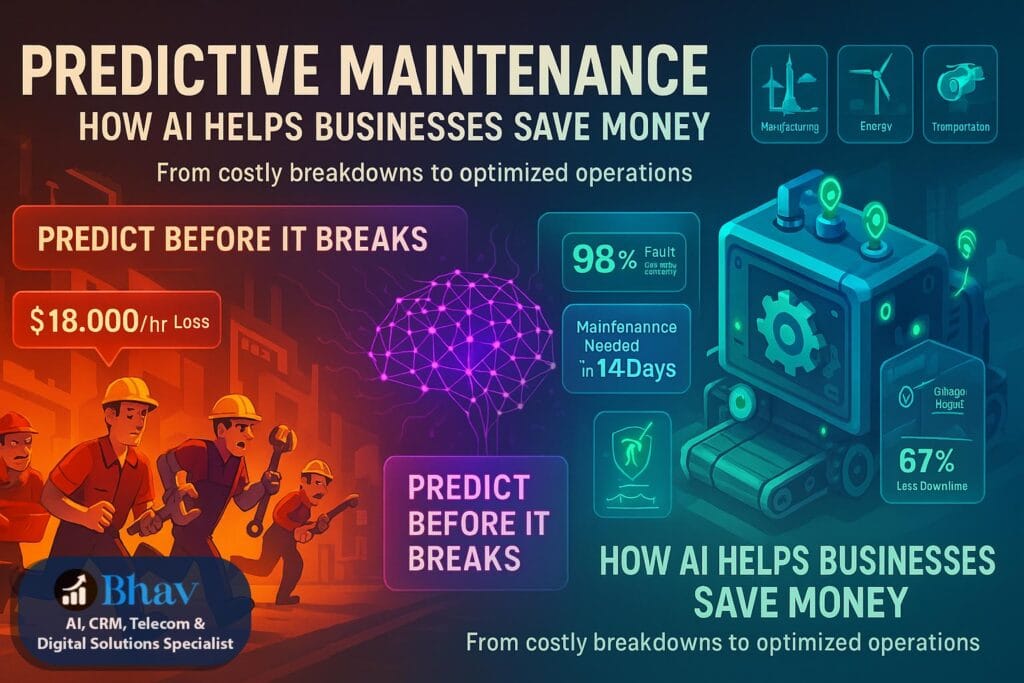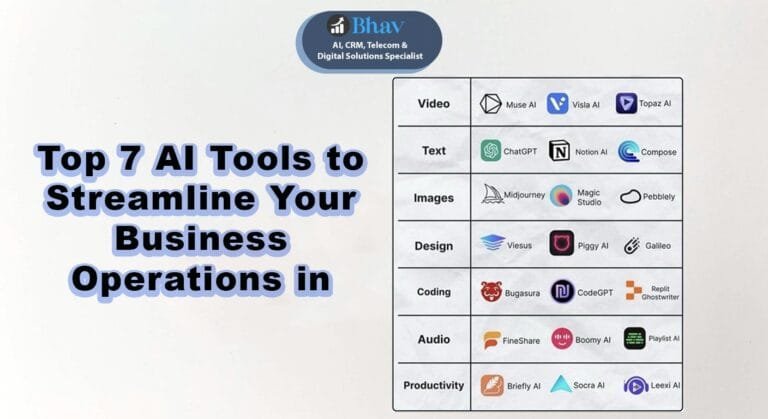
Introduction to Predictive Maintenance
Predictive maintenance (PdM) is an innovative approach that leverages advanced technologies to forecast when equipment and machinery will require maintenance. By utilizing data analysis and various predictive algorithms, businesses can evaluate the condition of their assets and anticipate failures before they occur. This proactive strategy offers significant advantages over traditional maintenance practices, such as scheduled or reactive maintenance, which often result in unexpected downtimes and increased operational costs.
Historically, maintenance strategies have relied heavily on routine inspections or responding to equipment malfunctions after they happen. These conventional methods can lead to inefficiencies, as they do not consider the actual condition of the machinery. As a result, organizations may either perform maintenance too frequently or neglect necessary upkeep until failures occur. This reactionary approach can negatively impact productivity, safety, and the bottom line, highlighting the pressing need for more intelligent solutions.
The increasing complexity of industrial systems and the mounting pressure on companies to maximize efficiency have made predictive maintenance a critical focus. By integrating artificial intelligence (AI) and machine learning algorithms into maintenance frameworks, organizations can analyze vast amounts of data from sensors and other digital tools. This allows them to detect patterns and generate insights that inform decision-making, ultimately minimizing the risk of unanticipated failures and reducing maintenance costs.
Moreover, predictive maintenance signifies a paradigm shift across various sectors, including manufacturing, transportation, and utilities. As industries adopt this state-of-the-art approach, businesses stand to improve their operational efficiency significantly. The transition to predictive maintenance enabled by AI not only facilitates better asset management but also fosters a culture of continuous improvement, paving the way for enhanced reliability and competitiveness in the marketplace.
Understanding AI in Predictive Maintenance
Artificial Intelligence (AI) plays a crucial role in transforming the landscape of predictive maintenance across various industries. By leveraging advanced technologies such as machine learning, data analytics, and Internet of Things (IoT) sensors, businesses can significantly enhance their maintenance strategies, leading to improved operational efficiency and cost savings.
Machine learning, a subset of AI, enables systems to learn from historical data and identify patterns that indicate potential equipment failures. By analyzing large datasets collected from equipment sensors, machine learning algorithms can detect anomalies that may not be immediately apparent to human operators. This capability allows organizations to move from a reactive maintenance model—where repairs are performed only after equipment failure—to a proactive, predictive approach. This transition minimizes downtime and extends the lifespan of machinery.
Data analytics complements machine learning by providing businesses with insights derived from vast amounts of operational data. Through advanced analytics, organizations can forecast when a particular asset may fail and prioritize maintenance efforts accordingly. Utilizing predictive analytics tools, businesses can evaluate the performance of their assets and make data-informed decisions that streamline processes, reduce costs, and enhance safety.
Additionally, IoT sensors are integral to the predictive maintenance ecosystem, as they continuously monitor equipment performance in real-time. These sensors capture critical data such as temperature, vibration, and operational cycles, which can be transmitted to cloud-based platforms for analysis. The integration of IoT technologies provides organizations with a comprehensive view of their equipment’s health, facilitating timely interventions that prevent catastrophic failures.
In summary, the synergy between machine learning, data analytics, and IoT sensors empowers businesses to implement a predictive maintenance framework driven by AI. This approach not only optimizes maintenance schedules but also fosters improved reliability and significant cost reductions in managing assets. By adopting these advanced technologies, organizations can ensure operational excellence and maintain a competitive edge in today’s dynamic business environment.
The Financial Impact of Downtime
Unplanned downtime can have severe financial repercussions for businesses across various industries. According to a study by the Institute of Management Accountants, equipment downtime can cost companies upwards of $260,000 per hour. The detrimental effects of operational disruptions extend well beyond just lost productivity; they can erode customer trust, result in missed revenue opportunities, and require expensive repairs. In the manufacturing sector, for instance, a single hour of downtime can unleash a domino effect, affecting not only the production line but also inventory management and supply chain operations.
Real-world examples further underscore these statistics. A prominent automotive company experienced a significant production halt due to equipment failure, which led to an estimated loss exceeding $1 million for just one day’s worth of downtime. Similarly, in the healthcare industry, delayed operations can complicate patient care, leading to prolonged hospital stays and potential legal actions. The financial implications can cascade, impacting not just the immediate stakeholders but also leading to broader economic repercussions in local markets.
As operational dependability becomes increasingly crucial, there remains an urgent need for businesses to implement predictive maintenance strategies. These proactive solutions leverage artificial intelligence and data analytics to foresee equipment failures before they occur, substantially mitigating the risk of expensive unplanned downtime. For example, utilities that adopted predictive maintenance solutions reported up to a 25% reduction in operational costs and improved asset lifespan, allowing for more efficient use of resources and manpower.
Considering the multifaceted financial impacts associated with operational downtime, it becomes evident that organizations must prioritize the adoption of predictive maintenance. The long-term cost savings and enhanced productivity not only strengthen a company’s bottom line but also improve service delivery and customer satisfaction. By investing in predictive maintenance technology, businesses can strategize effectively to minimize risks associated with unforeseen disruptions, ultimately safeguarding their financial health.
Benefits of AI-Driven Predictive Maintenance
Artificial Intelligence (AI) has revolutionized the concept of predictive maintenance, presenting numerous benefits that traditional maintenance methods cannot match. One of the most significant advantages is the reduction in maintenance costs. Traditional methods often rely on scheduled maintenance routines and reactive measures, leading to unnecessary maintenance events and costly downtime. In contrast, AI-driven predictive maintenance anticipates equipment failures before they occur. By leveraging data analytics and machine learning algorithms, businesses can conduct maintenance activities only when necessary, significantly reducing operational costs.
Moreover, these predictive algorithms extend the lifespan of equipment. By enabling timely interventions and optimizing maintenance schedules, businesses can ensure that machinery in various sectors—from manufacturing to oil and gas—operates efficiently for extended periods. For example, a case study from a manufacturing facility revealed a 20% increase in equipment lifespan after implementing AI-driven predictive maintenance solutions. This technology identifies wear patterns and predictive anomalies, allowing for timely repairs and reducing the likelihood of abrupt breakdowns.
Improved safety is another critical benefit of AI-driven predictive maintenance. Equipment failures can lead to hazardous situations for employees and create a liability for businesses. With AI, organizations can monitor and predict potential issues that might compromise safety, enabling preemptive action. For instance, in the aviation industry, predictive maintenance has led to a significant decline in in-flight incidents due to better aircraft component monitoring.
Lastly, AI-driven predictive maintenance enhances overall operational efficiency. By minimizing downtime and ensuring optimal performance, businesses can achieve higher productivity levels. A notable case from the transportation sector showed a 15% improvement in operational efficiency after integrating AI for predictive maintenance processes. Effective utilization of AI technology not only leads to cost savings but also positions businesses to thrive in an increasingly competitive market.
Key Technologies Enabling Predictive Maintenance
Predictive maintenance has become increasingly effective due to several key technologies that work collaboratively to optimize operations and reduce costs. Advanced sensors play a crucial role by continuously monitoring equipment and machinery conditions. These sensors collect extensive data regarding parameters such as temperature, vibration, and pressure. The aggregated data enables businesses to assess the health of their assets in real time, making it easier to identify potential issues before they escalate.
Alongside sensors, big data analytics is fundamental to the predictive maintenance paradigm. The sheer volume of data generated by sensors requires sophisticated analytical tools to distill meaningful insights. By applying algorithms that can uncover patterns and anomalies in this data, companies can gain a comprehensive understanding of equipment performance over time. This actionable information is invaluable as it allows for informed decision-making, maximizing efficiency and minimizing downtime.
Cloud computing further enhances predictive maintenance capabilities. By storing vast amounts of data in the cloud, businesses can benefit from improved accessibility and scalability. This facilitates collaboration among teams and enables predictive maintenance systems to operate across multiple sites without the constraints of on-premise infrastructure. Furthermore, the integration of cloud-based solutions with IoT devices allows for real-time data analysis and monitoring, enhancing responsiveness in addressing maintenance needs.
Lastly, artificial intelligence (AI) algorithms are pivotal in transforming the data collected into actionable strategies. These algorithms can forecast failures, suggest optimal maintenance schedules, and customize maintenance approaches based on historical data and trends. The combination of AI with machine learning enables systems to improve their predictive capabilities continuously, offering businesses a competitive edge in asset management. Through these technologies, predictive maintenance empowers organizations to streamline operations, ultimately leading to significant cost savings and better resource management.
Implementation Challenges and Solutions
The integration of AI-based predictive maintenance systems into existing business frameworks presents several challenges. A primary obstacle is data integration. Organizations often operate with disparate data sources that must be effectively consolidated for AI models to accurately analyze equipment health. Ensuring that data is formatted correctly and accessed in real-time can be complex, thus hindering the potential of predictive maintenance. An effective solution to this issue involves implementing a centralized data management system. By utilizing a unified platform that aggregates data from various sources, businesses can streamline data accessibility and enhance the reliability of their predictive analytics.
Another significant challenge arises from skill gaps within the workforce. Many organizations may lack personnel equipped with the necessary technical know-how to manage AI tools effectively. This shortage can lead to underutilization of predictive maintenance systems, thereby failing to harness their full potential. To address this, companies could invest in training programs designed to enhance employees’ understanding of AI technologies specific to predictive maintenance. Collaborating with educational institutions or utilizing online learning platforms can provide workers with the essential skills they need to successfully deploy and maintain these technologies.
Additionally, the initial costs associated with implementing AI-based predictive maintenance systems can be daunting. Many businesses may be reluctant to invest heavily upfront due to uncertainties about return on investment. To mitigate this concern, organizations can consider phased implementation approaches. By starting with a pilot program, businesses can evaluate the effectiveness of predictive maintenance without committing extensive resources initially. This allows for adjustments to be made based on results, ultimately making the investment less risky and more manageable while ensuring a smoother transition to advanced maintenance strategies.
Case Studies: Success Stories of Predictive Maintenance
Predictive maintenance has made significant strides across various industries, demonstrating its transformative potential through real-world case studies. These success stories not only highlight the application of artificial intelligence (AI) but also showcase how businesses can enhance operational efficiency while achieving substantial cost savings.
One notable example is in the manufacturing sector, where a leading automotive manufacturer implemented AI-driven predictive maintenance to minimize machinery downtime. By utilizing sensors and machine learning algorithms to analyze equipment data, the company could predict failures before they occurred. This proactive approach resulted in a 30% reduction in unscheduled downtime, translating into savings of approximately $2 million annually. Furthermore, the integration of predictive analytics allowed for a more optimized maintenance schedule, ensuring that maintenance was performed only when necessary.
In the energy sector, a large wind farm employed similar technologies to improve the reliability of its turbines. By leveraging AI to analyze vibration data and environmental conditions, the operators could identify potential issues with specific turbines long before any mechanical failure occurred. This strategy not only enhanced the operational capacity of the wind farm but also realized an impressive 25% increase in energy output, resulting in an estimated $1 million increase in annual revenue.
The transport industry also benefits from AI-driven predictive maintenance. A major airline adopted an AI system to monitor the condition of its aircraft engines. By detecting anomalies in engine performance data through advanced algorithms, the airline could perform maintenance interventions effectively. This initiative reduced engine-related delays and enhanced safety protocols, ultimately saving the company millions in operational costs while improving its reputation for reliability.
These case studies illustrate that the successful implementation of predictive maintenance strategies not only bolsters organizational performance but also offers significant financial rewards, positioning companies to thrive in a competitive landscape.
Future Trends in Predictive Maintenance
The future of predictive maintenance is poised to undergo significant transformations, primarily driven by advances in automation and artificial intelligence (AI). One of the most notable trends is the ongoing evolution of automation technologies. As industries begin to seamlessly integrate automated systems into their operations, predictive maintenance protocols will become increasingly sophisticated. These systems will utilize real-time data to anticipate equipment failures and optimize maintenance schedules, thereby maximizing operational efficiency and minimizing downtime.
In conjunction with automation advancements, the implementation of 5G networks is set to revolutionize predictive maintenance practices. The high-speed, low-latency connections provided by 5G will enable organizations to gather and analyze vast amounts of data instantly. This enhanced connectivity will facilitate broader IoT (Internet of Things) applications, allowing sensors embedded in machinery to relay real-time performance data to analytics systems. Organizations can leverage this instantaneous information flow to implement proactive maintenance measures, ensuring that any potential failures are addressed before they impact productivity.
Furthermore, as AI continues to advance, its integration into predictive maintenance frameworks will deepen. Machine learning algorithms will become adept at recognizing patterns and anomalies within data, allowing for more precise predictions about equipment condition and performance. This transition from reactive to predictive maintenance not only leads to substantial cost savings but also enhances the safety and reliability of operations across various sectors.
Overall, the convergence of automation, 5G technology, and advanced AI capabilities paints a promising future for predictive maintenance. Organizations that adapt to these emerging trends will likely gain a competitive edge, ultimately resulting in lower maintenance costs, improved equipment longevity, and enhanced operational agility. As these technologies continue to mature, the landscape of maintenance will be redefined, ushering in a new era of efficiency and reliability.
Conclusion
In summary, artificial intelligence (AI) has revolutionized the landscape of predictive maintenance, offering businesses a powerful tool to enhance operational efficiency and minimize costs. Throughout this discussion, we have examined how predictive maintenance leverages AI to anticipate equipment failures before they occur, ultimately leading to significant reductions in unplanned downtime and maintenance expenses. By utilizing advanced algorithms and data analytics, organizations can transition from traditional maintenance schedules to a more responsive, needs-based approach.
The key advantages of adopting AI-driven predictive maintenance include improved asset longevity, enhanced safety standards, and optimized resource allocation. These benefits underscore the importance of integrating such innovative technologies into regular operations. As businesses face increasing pressure to maintain profitability while ensuring quality, AI-enabled predictive maintenance emerges as a cost-effective solution that aligns with their financial objectives.
Furthermore, as the technology continues to evolve, organizations that embrace AI-driven solutions will likely enjoy a competitive edge in their respective industries. The seamless integration of predictive maintenance into existing frameworks not only streamlines processes but also equips businesses with the agility needed to respond to ever-changing market dynamics. Therefore, it is crucial for companies to explore further learning opportunities and implementation strategies that can facilitate the transition to an AI-enhanced maintenance model.
Looking ahead, the path forward for businesses hinges on their willingness to invest in technologies that drive efficiency and profitability. By prioritizing AI-driven predictive maintenance, companies stand to gain long-term financial and operational advantages that will ultimately contribute to their sustained success in the marketplace.



